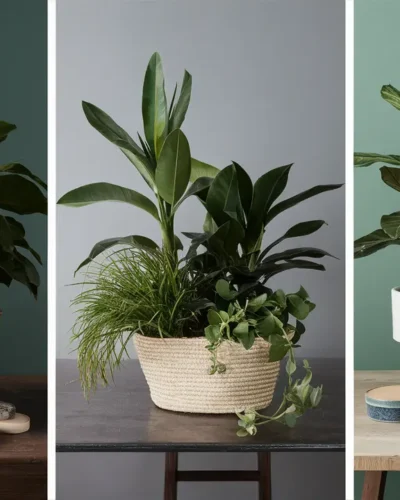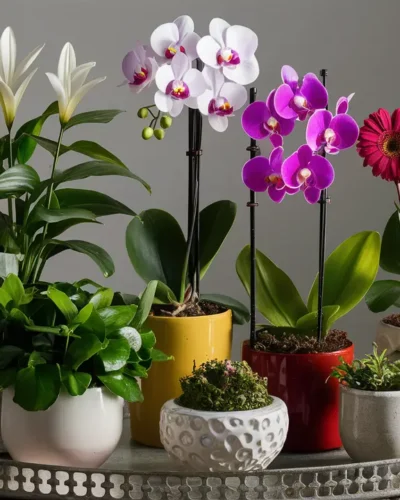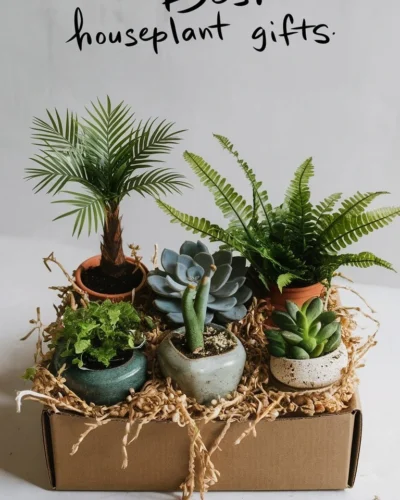Welcome to the ultimate guide to caring for ZZ plants, your new favourite houseplants! Whether you’re a seasoned plant enthusiast or just starting your green journey, ZZ plants are the perfect addition to any home due to their low maintenance and striking appearance.
Table of Contents
- Introduction
- Understanding ZZ Plants
- Ideal Growing Conditions
- Watering and Drainage
- Fertilizing and Nutrient Needs
- Pruning and Maintenance
- Propagation Techniques
- Common Issues and Solutions
- Decorating with ZZ Plants
- Conclusion
Introduction
In this comprehensive guide, we’ll delve into everything you need to know to keep your ZZ plants thriving. But first, let’s take a moment to understand what makes ZZ plants so special and why they’re the go-to choice for many plant lovers.
Meet ZZ Plants: Your New Favorite Houseplants
If you’re new to the world of ZZ plants, allow me to introduce you to these resilient beauties. As I’ve discussed in my post “Meet ZZ Plants: Your New Favourite Houseplants”, ZZ plants, scientifically known as Zamioculcas zamiifolia, are native to eastern Africa and belong to the Araceae family. With their glossy, dark green leaves and architectural silhouette, ZZ plants add a touch of elegance to any space.
Why ZZ Plants Are the Easiest Houseplants to Keep Alive
One of the main reasons ZZ plants have gained immense popularity is their ability to thrive in low-light conditions and tolerate neglect. In “Why ZZ Plants Are the Easiest Houseplants to Keep Alive”, I’ve highlighted how ZZ plants are virtually indestructible, making them perfect for busy individuals or those with a less-than-green thumb.
Creating a Beautiful Indoor Jungle with ZZ Plants and Self-Watering Planters
For those looking to create an indoor oasis with minimal effort, consider incorporating ZZ plants into your decor with the help of self-watering planters. In my article “Creating a Beautiful Indoor Jungle with Self-Watering Planters”, I explore how self-watering planters can simplify plant care and provide a consistent moisture level that ZZ plants love.
Now that you’re acquainted with the basics of ZZ plants, let’s dive deeper into how to care for these low-maintenance darlings and ensure they thrive in your home.
Understanding ZZ Plants
To care for ZZ plants effectively, it’s essential to understand their unique characteristics and requirements. Let’s explore what makes ZZ plants tick:
Botanical Characteristics
- Foliage: ZZ plants are prized for their glossy, dark green leaves that emerge from thick, fleshy stems. These leaves can grow up to 40 inches long, adding a dramatic touch to any space.
- Growth Habit: ZZ plants have a compact, upright growth habit, making them ideal for small spaces or as accent plants in larger arrangements.
- Toxicity: It’s worth noting that ZZ plants are considered mildly toxic if ingested, so it’s best to keep them out of reach of curious pets and children.
Native Habitat
- Origin: ZZ plants hail from the forests of eastern Africa, where they thrive in the dappled shade beneath larger trees.
- Adaptations: Their ability to tolerate low light and periods of drought stems from their natural habitat, where they’ve evolved to survive in challenging conditions.
Popular Cultivars
- ‘Zamioculcas zamiifolia’: The classic ZZ plant variety boasts dark green, lance-shaped leaves that cascade gracefully from their stems.
- ‘Raven’: For a more dramatic look, consider the ‘Raven’ cultivar, which features deep purple-black foliage that adds a touch of sophistication to any room.
- ‘Zenzi’: If you’re tight on space, the compact ‘Zenzi’ variety is a perfect choice, with smaller leaves and a more petite stature.
Now that we have a solid understanding of ZZ plants’ anatomy and origins, let’s dive into creating the perfect growing conditions for these resilient beauties.
Ideal Growing Conditions
Creating the perfect environment for your ZZ plants is key to ensuring they thrive. Let’s explore the ideal growing conditions:
Light Requirements
- Indirect Light: ZZ plants prefer bright, indirect light but can tolerate lower light conditions, making them perfect for offices or rooms with limited sunlight.
- Avoid Direct Sunlight: While ZZ plants can tolerate some direct sunlight, too much exposure can lead to sunburned leaves. It’s best to place them away from windows or use sheer curtains to filter the light.
Temperature and Humidity Considerations
- Moderate Temperatures: ZZ plants thrive in temperatures between 65°F and 75°F (18°C to 24°C). Avoid placing them near drafty windows or heating vents, as sudden temperature fluctuations can stress the plants.
- Low Humidity Tolerance: Unlike some tropical plants, ZZ plants can tolerate low humidity levels, making them ideal for dry indoor environments. However, occasional misting or placing a humidifier nearby can benefit their overall health, especially during winter months when indoor air tends to be drier.
Soil and Potting Requirements
- Well-Draining Soil: Use a well-draining potting mix designed for succulents or cacti to prevent waterlogged roots, which can lead to root rot.
- Terracotta or Ceramic Pots: Opt for pots with drainage holes to ensure excess water can escape freely. Terracotta or ceramic pots are excellent choices, as they allow for air circulation around the roots.
By providing the right balance of light, temperature, and humidity, you’ll create an optimal environment for your ZZ plants to thrive. Now, let’s move on to the essential aspect of ZZ plant care: watering and drainage.
Watering and Drainage
Proper watering is crucial for ZZ plants’ health, as they are sensitive to overwatering. Let’s dive into the best practices for watering and ensuring adequate drainage:
Frequency of Watering
- Allow Soil to Dry: ZZ plants prefer to dry out slightly between waterings. Check the soil moisture by inserting your finger about an inch into the soil; if it feels dry, it’s time to water.
- Water Sparingly: During the growing season (spring and summer), water ZZ plants once every 2-3 weeks. In winter, reduce watering frequency to once a month or when the soil is completely dry.
Techniques for Proper Drainage
- Use Well-Draining Soil: As mentioned earlier, using a well-draining potting mix is essential to prevent waterlogged roots. Avoid heavy or moisture-retentive soils that can lead to root rot.
- Provide Adequate Drainage: Ensure your pots have drainage holes to allow excess water to escape. If using decorative pots without drainage, consider placing a layer of gravel or clay balls at the bottom to improve drainage.
Signs of Overwatering and Underwatering
- Overwatering: Symptoms of overwatering include yellowing leaves, mushy stems, and a foul odor emanating from the soil. If you notice these signs, allow the soil to dry out completely before watering again.
- Underwatering: ZZ plants are resilient and can tolerate occasional neglect, but prolonged underwatering can lead to wilting, dry leaves, and stunted growth. If your ZZ plant shows signs of underwatering, give it a thorough watering and adjust your watering schedule accordingly.
By mastering the art of watering and ensuring proper drainage, you’ll help your ZZ plants thrive and avoid common pitfalls. Next, let’s explore how to provide essential nutrients to keep your plants healthy and vibrant.
Fertilizing and Nutrient Needs
While ZZ plants are low-maintenance, they still benefit from occasional fertilization to support healthy growth. Let’s delve into how to provide essential nutrients for your ZZ plants:
Suitable Fertilizers for ZZ Plants
- Balanced Fertilizer: Use a balanced, water-soluble fertilizer with an equal NPK ratio (Nitrogen, Phosphorus, Potassium), such as 10-10-10 or 20-20-20.
- Dilute Solution: Mix the fertilizer according to the instructions on the label, and apply it at half-strength to avoid overfertilizing, which can damage ZZ plants’ sensitive roots.
Frequency and Timing of Fertilization
- Spring and Summer: Fertilize ZZ plants once a month during the active growing season (spring and summer) to support new growth and overall health.
- Reduce in Winter: Cut back on fertilization during the dormant winter months, as ZZ plants require less nutrients when their growth slows down.
Essential Nutrients for Healthy Growth
- Nitrogen (N): Promotes lush, green foliage and overall plant vigor.
- Phosphorus (P): Supports root development and flower production.
- Potassium (K): Enhances stress tolerance and overall plant resilience.
Related Article: The Science Behind Self-Watering Planters
In my article “The Science Behind Self-Watering Planters”, I delve into the innovative technology behind self-watering planters and how they can benefit ZZ plants by providing a consistent supply of water and nutrients.
By providing your ZZ plants with the right balance of nutrients, you’ll ensure they continue to thrive and beautify your space. Now, let’s move on to pruning and maintenance tips to keep your ZZ plants looking their best.
Pruning and Maintenance
Regular pruning and maintenance play a vital role in keeping ZZ plants healthy and attractive. Let’s explore how to care for your ZZ plants through proper pruning and maintenance techniques:
Removing Dead or Yellowing Leaves
- Inspect Regularly: Check your ZZ plant regularly for any dead or yellowing leaves. These can be a sign of overwatering, underwatering, or simply old age.
- Gently Remove: Using clean, sharp scissors or pruning shears, carefully trim away any dead or yellow leaves at the base of the stem. Be sure not to damage the healthy foliage.
Controlling Plant Size and Shape
- Trimming Stem Tips: To control the size and shape of your ZZ plant, trim the tips of the stems as needed. This encourages branching and promotes a fuller, bushier appearance.
- Pruning Leggy Growth: If your ZZ plant starts to develop long, leggy stems, prune them back to encourage new growth and maintain a compact form.
Pest Prevention and Management
- Inspect Regularly: Keep an eye out for common pests such as mealybugs, spider mites, and scale insects. Check both the foliage and soil for any signs of infestation.
- Natural Remedies: If you notice pests, try gently wiping the affected areas with a damp cloth or cotton swab dipped in rubbing alcohol. For severe infestations, consider using insecticidal soap or neem oil, following the instructions carefully.
Related Article: How to Deter Pets from Chewing on Houseplants
In my article “How to Deter Pets from Chewing on Houseplants”, I share effective strategies for preventing pets from damaging your houseplants, including ZZ plants, and keeping both your furry friends and your plants safe.
By incorporating regular pruning and maintenance into your ZZ plant care routine, you’ll ensure they remain healthy, vibrant, and free from pests. Next, let’s explore how to propagate ZZ plants to expand your collection or share with friends.
Propagation Techniques
Propagating ZZ plants is a rewarding way to expand your collection or share the beauty of these plants with friends and family. Let’s explore some simple propagation techniques:
Division Method
- Select Healthy Plant: Choose a mature ZZ plant with multiple stems or rhizomes for division.
- Carefully Remove Plant: Gently remove the plant from its pot and shake off excess soil to expose the rhizomes.
- Separate Rhizomes: Use a clean, sharp knife to divide the rhizomes into smaller sections, ensuring each section has at least one stem and a portion of the root system.
- Plant in New Pots: Plant each divided section in its own pot with fresh potting mix, water thoroughly, and place in a bright, indirect light location.
Leaf-Cutting Method
- Select Healthy Leaf: Choose a healthy, mature leaf from your ZZ plant for propagation.
- Cut Leaf into Sections: Using a clean, sharp knife or scissors, cut the leaf into sections approximately 2-3 inches in length.
- Allow Callus Formation: Place the leaf cuttings in a warm, dry location to allow the cut ends to callus over for a few days.
- Plant in Soil: Once callused, plant the leaf cuttings in moist potting mix, burying the cut ends slightly. Keep the soil lightly moist and provide indirect light.
Tips for Successful Propagation
- Warmth and Humidity: Maintain a warm, humid environment during propagation to encourage root growth. Consider placing propagating plants in a propagation tray or covering them with a plastic dome to retain moisture.
- Patience: Propagation can take time, so be patient and allow the new plants to establish roots before expecting significant growth. It may take several weeks or even months for new growth to emerge.
- Related Article: Breathe New Life Into Your Houseplants: Repotting Done Right
In my article “Breathe New Life Into Your Houseplants: Repotting Done Right”, I discuss the importance of repotting houseplants, including ZZ plants, and share tips for ensuring a successful transition to a new pot.
By mastering propagation techniques, you can create an endless supply of ZZ plants to adorn your home or share with fellow plant enthusiasts. Now, let’s address common issues that may arise while caring for ZZ plants and how to solve them effectively.
Common Issues and Solutions
While ZZ plants are known for their resilience, they may encounter some common issues from time to time. Let’s explore how to identify and address these issues effectively:
Yellowing Leaves
- Overwatering: Yellowing leaves can be a sign of overwatering, leading to root rot. Allow the soil to dry out completely between waterings and adjust your watering frequency accordingly.
- Underwatering: Conversely, underwatering can also cause yellowing leaves. Ensure your ZZ plant is receiving adequate water by checking the soil moisture regularly and watering when needed.
Pests and Diseases
- Mealybugs: These small, white insects may appear as cottony masses on the leaves or stems. Treat infested plants with insecticidal soap or neem oil, and isolate them from other plants to prevent further spread.
- Spider Mites: These tiny pests can cause stippling or webbing on the leaves. Increase humidity around affected plants and treat with insecticidal soap or horticultural oil.
- Root Rot: Overwatering or poorly draining soil can lead to root rot, characterized by mushy, brown roots. If caught early, repotting the plant in fresh, well-draining soil can help save it. Trim away any affected roots before repotting.
Drooping or Wilting
- Water Stress: ZZ plants may droop or wilt if they are experiencing water stress, either from overwatering or underwatering. Adjust your watering routine to ensure the soil moisture is consistent and appropriate for your plant’s needs.
- Temperature Stress: Extreme temperature fluctuations or exposure to drafts can also cause ZZ plants to droop. Keep your plant away from drafty windows or heating vents, and maintain a stable temperature within the optimal range for ZZ plants.
Related Article: How Houseplants Become Your Natural Stress Busters
In my article “How Houseplants Become Your Natural Stress Busters”, I explore the numerous benefits of indoor plants, including ZZ plants, for reducing stress and improving overall well-being.
By addressing common issues promptly and implementing appropriate solutions, you can help your ZZ plants thrive and continue to bring beauty and greenery into your home. Now, let’s explore creative ways to incorporate ZZ plants into your home decor.
Decorating with ZZ Plants
ZZ plants not only provide aesthetic appeal but also offer versatility in home decor. Let’s explore creative ways to incorporate ZZ plants into your living space:
Suitable Indoor and Outdoor Placements
- Indoor: Place ZZ plants in well-lit areas with indirect sunlight, such as living rooms, bedrooms, or offices. They can thrive as standalone statement pieces or as part of a larger plant arrangement.
- Outdoor: In warmer climates, ZZ plants can be grown outdoors in shaded or partially shaded areas, such as patios, balconies, or shaded garden beds. Ensure they are protected from direct sunlight and harsh weather conditions.
Styling Tips for Interior Design
- Minimalist Aesthetics: The sleek, architectural silhouette of ZZ plants complements minimalist and modern interior design styles. Pair them with clean lines and neutral color palettes for a contemporary look.
- Statement Plant: Use ZZ plants as focal points in your decor by placing them in decorative pots or plant stands. Choose pots that complement your existing decor scheme or add a pop of color for visual interest.
- Grouping Plants: Create visual impact by grouping ZZ plants together with other houseplants of varying heights, textures, and foliage colors. This adds depth and dimension to your indoor jungle.
Companion Planting Ideas
- Tropical Vibes: Pair ZZ plants with other tropical houseplants such as pothos, snake plants, or peace lilies to create a lush, jungle-inspired corner in your home.
- Contrasting Textures: Mix and match ZZ plants with succulents or cacti to create an intriguing juxtaposition of textures and shapes. The glossy leaves of ZZ plants complement the spiky or fleshy foliage of succulents beautifully.
Related Article: Frugal Foliage: 8 Affordable Houseplants to Beautify Your Backyard
In my article “Frugal Foliage: 8 Affordable Houseplants to Beautify Your Backyard”, I share budget-friendly options for adding greenery to your outdoor space, including ZZ plants and other low-maintenance varieties.
With these styling tips and companion planting ideas, you can elevate your home decor with the timeless beauty of ZZ plants. Experiment with different arrangements and placements to create a personalized oasis that reflects your unique style and personality. Now, let’s wrap up our guide with a recap of key points and final thoughts.
Conclusion
Congratulations on completing the ultimate guide to simple ZZ plant care! Let’s recap what we’ve covered and offer some final thoughts:
Recap of Key Points
- Understanding ZZ Plants: We explored the botanical characteristics, native habitat, and popular cultivars of ZZ plants.
- Ideal Growing Conditions: We discussed the importance of providing adequate light, temperature, humidity, soil, and potting requirements for ZZ plants.
- Watering and Drainage: We learned about the frequency of watering, techniques for proper drainage, and signs of overwatering and underwatering.
- Fertilizing and Nutrient Needs: We explored suitable fertilizers, frequency and timing of fertilization, and essential nutrients for healthy growth.
- Pruning and Maintenance: We discussed how to remove dead or yellowing leaves, control plant size and shape, and prevent and manage pests and diseases.
- Propagation Techniques: We explored division and leaf-cutting methods for propagating ZZ plants and shared tips for successful propagation.
- Common Issues and Solutions: We identified common issues such as yellowing leaves, pests, diseases, and drooping or wilting, and offered solutions to address them effectively.
- Decorating with ZZ Plants: We provided styling tips and companion planting ideas for incorporating ZZ plants into your home decor.
Final Thoughts
ZZ plants are not only stunning additions to your home but also resilient companions that require minimal care. Whether you’re a seasoned plant enthusiast or just starting your green journey, ZZ plants are sure to bring beauty and tranquility to your living space. Remember to observe your plants regularly, adjust your care routine as needed, and enjoy the satisfaction of watching your ZZ plants thrive.
Related Article: Boost Your Indoor Garden: The Essential Guide to 10 Growth Factors
In my article “Boost Your Indoor Garden: The Essential Guide to 10 Growth Factors”, I delve deeper into the key factors that influence plant growth and offer tips for optimizing your indoor garden, including ZZ plants.
Thank you for joining us on this ZZ plant care journey. We hope you feel empowered and inspired to nurture your ZZ plants to their full potential. Happy gardening!
Frequently Asked Questions
1. How often should I water my ZZ plant?
- ZZ plants prefer to dry out slightly between waterings. During the growing season (spring and summer), water them once every 2-3 weeks. In winter, reduce watering frequency to once a month or when the soil is completely dry.
2. Can ZZ plants tolerate low light?
- Yes, ZZ plants can tolerate low light conditions, making them perfect for offices or rooms with limited sunlight. However, they prefer bright, indirect light for optimal growth.
3. What should I do if my ZZ plant’s leaves are turning yellow?
- Yellowing leaves can be a sign of overwatering or underwatering. Ensure the soil dries out between waterings and adjust your watering schedule accordingly. Trim away any dead or yellow leaves to encourage new growth.
4. How do I propagate ZZ plants?
- ZZ plants can be propagated through division or leaf-cutting methods. Divide mature plants into smaller sections with roots intact, or cut healthy leaves into sections and plant them in moist soil to encourage new growth.
5. What are common pests and diseases that affect ZZ plants?
- Common pests include mealybugs, spider mites, and scale insects. Treat infestations with insecticidal soap or neem oil. ZZ plants may also experience root rot if overwatered, which can be addressed by repotting in fresh, well-draining soil.
6. Can ZZ plants be grown outdoors?
- In warmer climates, ZZ plants can be grown outdoors in shaded or partially shaded areas. Ensure they are protected from direct sunlight and harsh weather conditions.
7. How do I style ZZ plants in my home decor?
- ZZ plants can be styled as standalone statement pieces or grouped with other houseplants for visual interest. Pair them with minimalist aesthetics or tropical vibes, and experiment with different potting arrangements to suit your style.
8. Are ZZ plants safe for pets?
- While ZZ plants are considered mildly toxic if ingested, they are generally safe for pets if kept out of reach. Monitor pets around ZZ plants and seek veterinary assistance if ingestion occurs.







